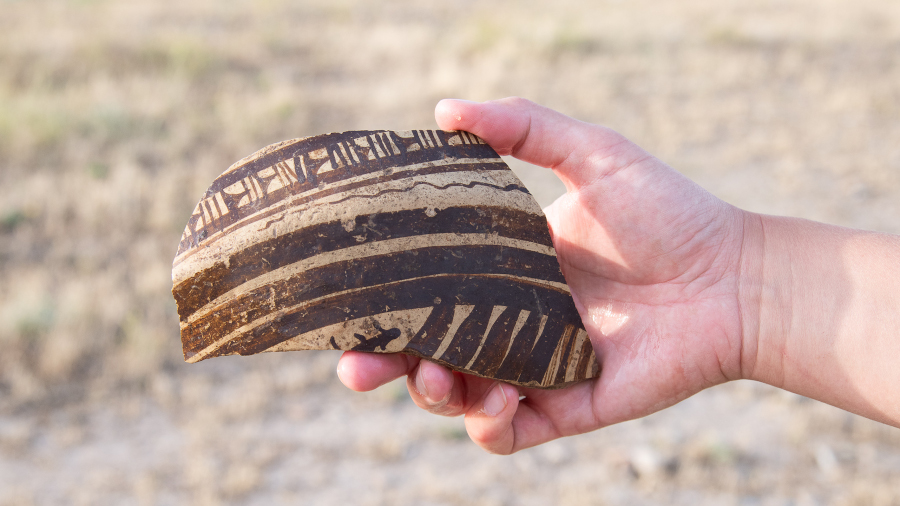New discoveries found in Iraqi Kurdistan key to the emergence of agriculture and first city-states
In May of this year, researchers from the UAB Department of Prehistory have finalised a new excavation and archaeological study campaign in Iraq, in the area of Kurdistan. The results of the two first excavation campaigns (2023 and 2024) have led to the discovery of habitat remains, the recovery of very well preserved architecture, richly preserved tombs and, in general, archaeological remains that provide historical data for the knowledge of the origin of agriculture and livestock farming and the appearance of the first city-states in this region, a worldwide pioneer in historical transformations.

Since 2015, UAB researchers have been carrying out an international archaeological research project in Iraq, specifically in the region historically called Northern Mesopotamia and currently known as Iraqi Kurdistan. This historical region has now opened to international archaeological research, after many years of blockage and geopolitical difficulties.
In the last campaigns, work was carried out at several sites: two in the mountainous region of Zagros and one in the plain of the Tigris River. The originality of the project lies in the transversal and diachronic analysis, since each archaeological site that is the object of research corresponds to a specific period and moment of historical change.
The mountains of Zagros: from nomad life to the beginnings of agriculture, livestock farming and private property
Firstly, in the Gali Chan caves (Soran province), located in the rugged landscape of the Zagros mountains, temporary camps created by the last hunters/gatherers (c. 9000 BCE) were identified. The remains recovered indicate a nomadic lifestyle and living spaces with hunting activities and, above all, the preparation of flint tools at a time before the adoption of agriculture and livestock farming.
Secondly, and also in the mountainous area of the Zagros, another project excavated and studied the site of Banahilk (Soran province), a village of consolidated farmers and herders from the Halaf period (c. 6000-5500 BCE). This is the easternmost known settlement, from which several rectangular houses, earthen architecture and the main domestic implements (pots, hearths, firepits, etc.) were recovered. The different exogenous materials, more specifically the obsidian blades and stone vessels, also reveal a connection with the distribution networks of Anatolia and Iran. The study of the agricultural (cereals and leguminous plants) and livestock (sheep, goats, cattle and swine) evidence indicates the complexity of farm life at the time of the emergence of private property.
The plains of the Tigris River: advanced architectonic techniques
The third site was located in the plains of the Tigris River, to the north of Mesopotamia, where archaeological digs were conducted at Gird Laskhir (Erbil province). Due to its size (4 hectares and 14 metres high), this settlement can be considered small in comparison to the size of ancient cities. It is considered one of the settlements that was permanently occupied in the historical periods of the Chalcolithic and the Early and Middle Bronze Age (c. 3500 to 2000/1900 BCE). The recovered dwellings indicate highly developed architectural techniques with complex multicellular constructions, in which it was possible to document the spaces for cooking, preparation and consumption of food. Thanks to the analyses and studies carried out, researchers were able to determine an abundant consumption of cereals and legumes, as well as the exploitation of domestic animals, particularly sheep and cattle.
Unique discovery of ceramic vessels inside a monumental tomb
In the campaigns of 2023 and 2024, burial sites were discovered containing with very rich furnishings, demonstrating that the city of Laskhir participated in the exchange of products with the southern regions (Lower Mesopotamia), but also with those to the east (Zagros and Iran) and west (eastern part of the Euphrates Valley). The products traded were jewels and semi-precious stones (obsidian, lapis lazuli, carnelian, obsidian, etc.), and also materials for construction or other technical activities (bitumen). The project was also able to study and restore the furnishings of a monumental tomb in which it was possible to discover a concentration of 20 ceramic vessels and other luxurious objects, which make it truly exceptional.
The field work carried out between April and May 2024 was completed on Saturday 25 May. Now, the laboratory analyses will begin in order to advance in the historical knowledge of one of the most dynamic regions in prehistory and early antiquity.
Only project from Spain to be conducted in this part of the world
This UAB archaeological project is the only Spanish project in this area of the world and is being carried out under a framework of cooperation with the country's institutions both at research and academic levels. It is an international project coordinated by Miquel Molist, professor of the Department of Prehistory of the UAB, and Anna Bach, associate lecturer of the same department. The project involves researchers from the Grup de Recerca Arqueològica de la Mediterrània i del Pròxim Orient (GRAMPO) - Seminari d'Arqueologia Prehistòrica del Pròxim Orient (SAPPO) of the Department of Prehistory of the UAB, of the University of Oxford (UK), and the Salahaddin University (Erbil, Iraqi Kurdistan), with the support of the National Archaeological Museum of Erbil and the Archaeological Museum of Catalonia (MAC). The project is funded by the Spanish Ministry of Culture, Ministry of Science, Innovation and Universities, and the Foundación Palarq.